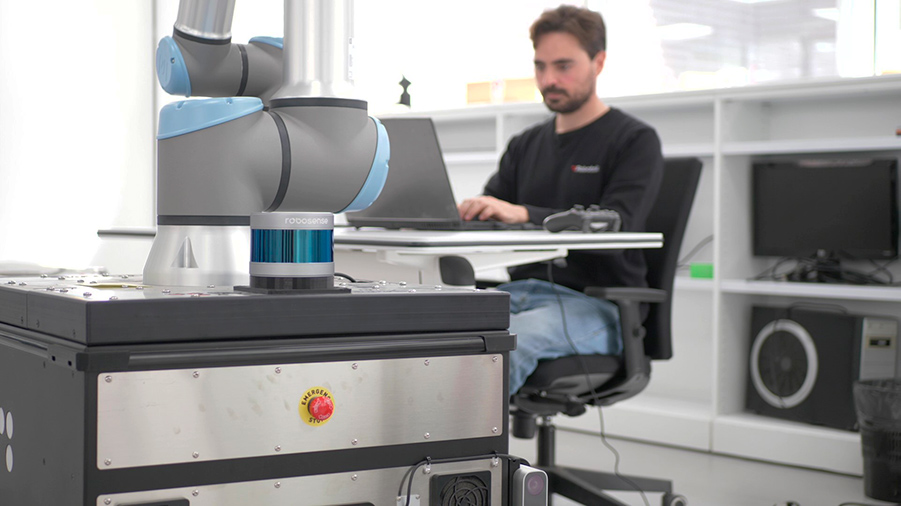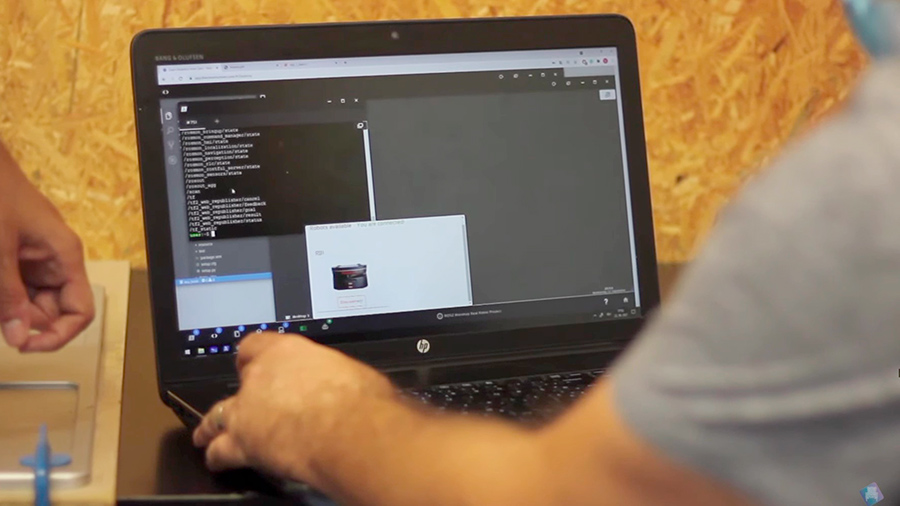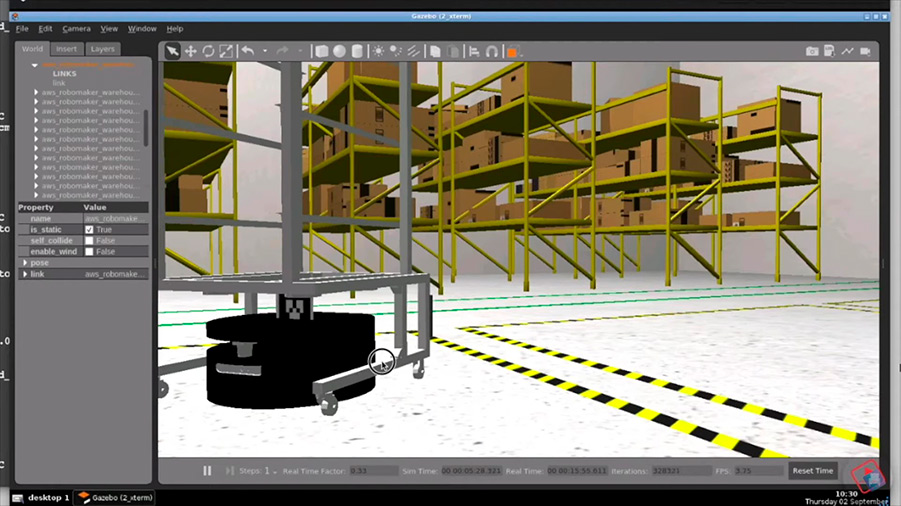Every electronic device or machine requires a language both to move and to communicate with other devices, with humans or with the environment.
This is the programming language that a robot uses, in other words, the code or set of instructions -algorithms- that will make the robot execute tasks efficiently.
Of the more than 1,500 coding languages that exist, what coding language is used in robotics? Well, it simply depends. It depends on the applications you intend to develop or the system you use.
Some of the robot programming languages available are: C#, Python, Java, MATLAB or PHP. However, this article focuses on the robot programming language that Robotnik works with for the development of its autonomous mobile robots.
So, if you wonder what programming languaje is used in robotics, come and read.
HOW DO YOU PROGRAM A ROBOT?
Currently the most widely used programming language in the robotics sector is C++.
It is probably closely followed by Python. This language is key in the testing of an autonomous mobile robot and also very widespread in the robotics sector due to its relationship with ROS developers.
PROGRAMMING A ROBOT WITH PYTHON
Known as the language of data, PYTHON is an open source programming language, probably one of the simplest, most popular and most versatile of all.
It is an Object Oriented Programming (OOP) language fully linked to the development of artificial intelligence and virtual reality.
Python is above all a very flexible and fast language for prototyping where the end user will simply have to run the code, without the need to compile. The problem with Python is that perhaps, as it does not take errors into account until it is executed, it can crash in the middle of a program.
PROGRAMMING A ROBOT WITH C++
C++ emerged as an extension of the C programming language, known as a multi-paradigm language because it is object-oriented, as is Python, but also structured programming and generic programming paradigms.
Although the development of applications in C++ is sometimes more time-consuming because it requires the compilation of the software, it is a robust programming language that allows the creation of complex programs following a solid structure without giving rise to mistakes or errors.
WHAT ROBOT PROGRAMMING LANGUAGES ARE USED AT ROBOTNIK?
Robotnik uses the robotic programming languages C++ and Python to create routines, algorithms or communication with sensors, motors, drivers, etc., but for the highest level interaction with the robot, this option is avoided, creating an environment that encapsulates these programming languages in a more intelligible and understandable language for someone who bets on mobile robotics in their business, but has no programming skills.
Robotnik provides much of the source code of the robot, as well as simulations of them, through our official GitHub. This allows developers from all over the world to test our robots virtually and make improvements to the code we offer.
But for the end user or customer, this extrapolates to a more intuitive programming environment such as the block programming interface. In fact, the block programming language is already teaching in schools because of its simplicity and functionality.
Instead of the user having to enter a black-and-white terminal or transmit an overly complex command, a block is obtained via HDMI that encapsulates pre-programmed and configurable actions, as in logistics tasks: the mobile robot goes from point X to point Y on the map, transports a load from point A to point B or simply goes to the charger when the battery level is low.
Does a customer need to know how to program a robot?
After more than 20 years of experience of Robotnik, is known that this is the most comfortable option for the end user. Maybe in a company that decides to incorporate autonomous mobile robotics, there is a worker with sufficient technical knowledge that knows how to program at low level the Core or the bases of the robot as Robotnik engineers do, but if this is not the case, this is not an issue. The advantage is that it is not essential to have someone on staff with knowledge of robot programming languages.
Another advantage of these two robot programming languages is that they are the main ones that ROS offers and whose libraries are more developed.
Robotnik has been committed to ROS since its creation, but what is ROS?
ROS
ROS is not exactly a robotic programming language but rather a system or framework in which to program robot software.
In other words, a set of open source software frameworks that allow you to abstract the hardware.
Once you know what coding language is used for robotics and you already have the tool for programming, now you also need the environment in which to do it, and that’s where ROS comes in.
Before ROS, when the user changed robots or acquired a different one, he or she had to learn to use new software. Now, however, it is possible to share programs, codes and commonly used functions between robots. It also facilitates integration between systems, which is more costly if you change the paradigm.
It is a set of packages, resources and tools that creates a common ground for all developers so that if someone has made a program that communicates with a driver or does a certain algorithm, they have an interface – ROS – that allows others to use what they need to program their code. ROS is a language of languages that allows you to communicate between different nodes written in any language.
In conclusion, this standard is the most developed among mobile robotics programmers.
If you are interested in reading more in detail about ROS: Learn ROS online?
Did you know that all Robotnik mobile robots support ROS software?




